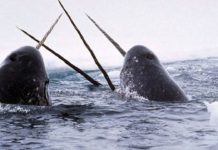PARIS — Cristian Garín, a stocky tennis player from Chile, is nicknamed El Tanque — The Tank.
But Toni Nadal, Rafael Nadal’s uncle and longtime coach, once said Garín lacked “conviction” and “extra determination.” And a headline in Garín’s native country cast doubt on his mental toughness. Those doubts are dissipating, a development that has been a long time in the making.
Six years ago, Garín won the French Open junior boys title, but it was not until Monday at Roland Garros that Garín, 22, notched his first victory in a Grand Slam tournament, defeating Reilly Opelka of the United States, 7-6 (0), 7-5, 7-6 (7).
It was the latest step upward in a career that has been burdened by weighty expectations. Garín has established himself on the tour this year, winning two titles and 20 matches on clay courts, second behind Guido Pella’s 21. Just over a year ago, Garín was ranked outside the top 200. He is now 37th.
In the process he has rewritten his reputation, transforming from a player whose mental toughness was routinely questioned to the leader of the ATP’s “Under Pressure” index, which assesses performance on break points, tiebreakers and deciding sets.
Garín’s road to the second round of the French Open has taken longer than expected.
His parents played tennis every weekend, and he first picked up a racket at 2 and started playing at 4. He would eventually become the most hyped young prospect in Chile, where tennis ascended during his childhood as Nicolás Massú won gold medals in singles and in doubles, with Fernando González, at the 2004 Athens Olympics.
After reaching the second round of the ATP tournament in Santiago, Chile, at 16, Garín added to his stellar junior résumé. He finished his run to the title at Roland Garros by beating Borna Coric, now No. 15, in the semifinals and Alexander Zverev, now ranked fifth, in the final.
Chile, like several other South American nations where soccer reigns supreme, has a small but fervent tennis following. Fans there have long sought a successor to the former world No. 1 Marcelo Ríos, as well as to Massú. Garín’s early success generated plenty of excitement. He was awarded a car sponsorship before he was old enough to drive. But he struggled early in his professional career, stalling at the second-tier Challenger level as players like Coric and Zverev cruised past him.
“I don’t like to think about my past — it was tough for me,” Garín said. “I played a lot of Challengers, a lot of Futures.”
After Garín failed to find chemistry with several coaches, his family sold their house and other possessions to pay for him to relocate to Spain, where he trained for a time at the Rafael Nadal Academy.
Toni Nadal said in a 2017 article in La Tercera, a newspaper in Santiago, that he admired Garín’s weapons as a player but doubted his commitment to the sort of “suffering” that has been a Nadal family virtue.
“You have to love it,” Nadal said. “In the end, the difference is to be involved or not; it depends on the obsession that you put on it. He lacks this extra determination — I do not know if for lack of confidence or maturity — to want to be a great player.”
As Garín plateaued, the news media in Chile grew increasingly skeptical of his potential. One article in La Tercera carried a headline blaring that Garín couldn’t handle his own head. The article questioned his mental toughness after an emotional first-round loss at a Challenger tournament in Santiago when he was a 20-year-old ranked 276th.
“Two and a half hours later he was sitting on the floor with his head in both hands, while his friends tried to console him with little success,” it said. “Tears reflected the incapability of finding the way out of a problem, which is already becoming a habit.”
Massú said recently that patience would have been prudent in a sport where teenage sensations barely exist anymore: “It’s normal that you need a few years to adapt to the professional tour.”
Garín returned to Chile, and last year began working with the Argentine coach Andrés Schneiter, who has emphasized preparation to take pressure off Garín and improve his play on the most important points. Under Schneiter’s guidance, Garín broke into the top 100 for the first time late last year, after reeling off three consecutive Challenger titles to finish his season.
Once the tour shifted to clay this season, Garín was off to the races. He reached his first ATP final in São Paulo in March before winning in Houston and Munich, the latter event including another win over Zverev. Garín said a goal for this year was to improve on hard and grass courts as well, but his coach warned against thinking too big.
“The idea is not to burden him with pressure, because the objectives of this year are fulfilled,” Schneiter told La Tercera this month. “This year was an adaptation, because you go from playing Challengers to facing players you see on television.”
When Garín returned home after his title in Munich, he was welcomed at a sponsor event with drum rolls and smoke machines.
Through less than five months of this season, he has already doubled his career prize money, even without playing in the main draw of any of the lucrative Masters 1000 events.
Garín’s next step, in the second round, will pit him against Stan Wawrinka, the 2015 French Open champion.
“When you are in the top 100, you start to practice and play every day with the best players in the world,” Massú said. “You play the big tournaments, you start to see how the other guys play against you, against other guys. You start to see everything. You start to learn more things. I think he has the talent and the potential to be, one day, much better than now.”
Source : NYtimes












